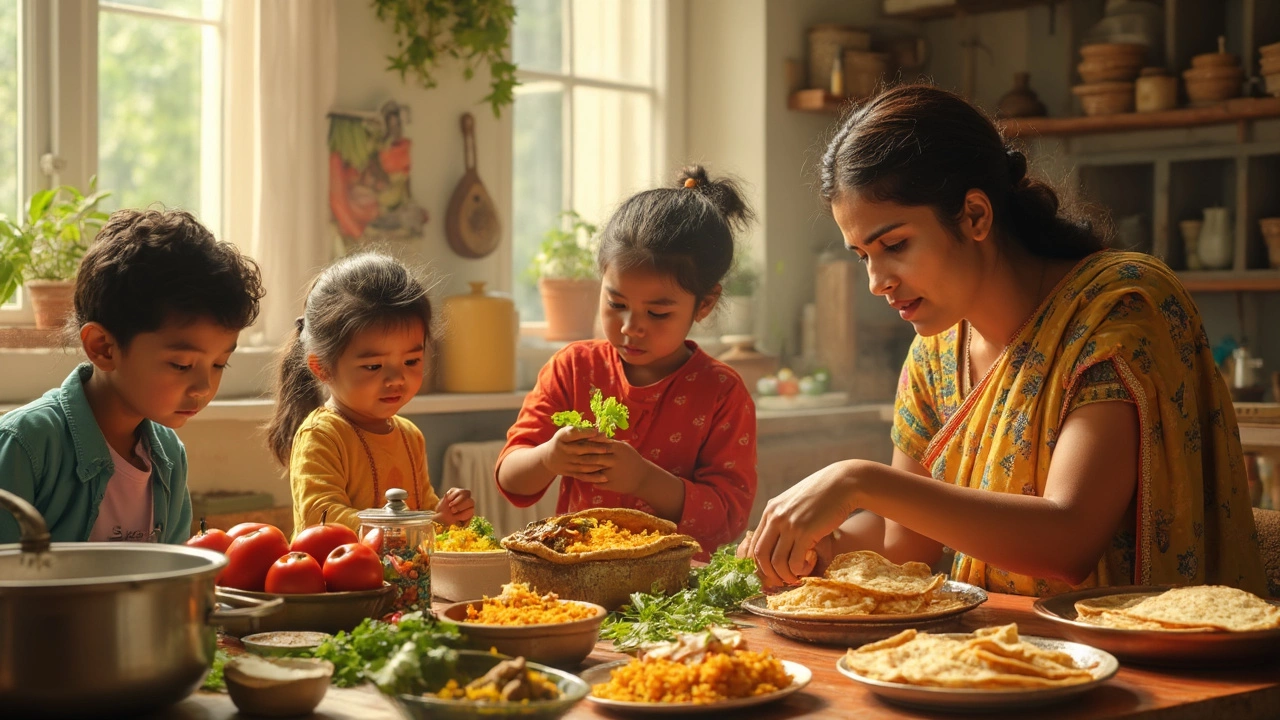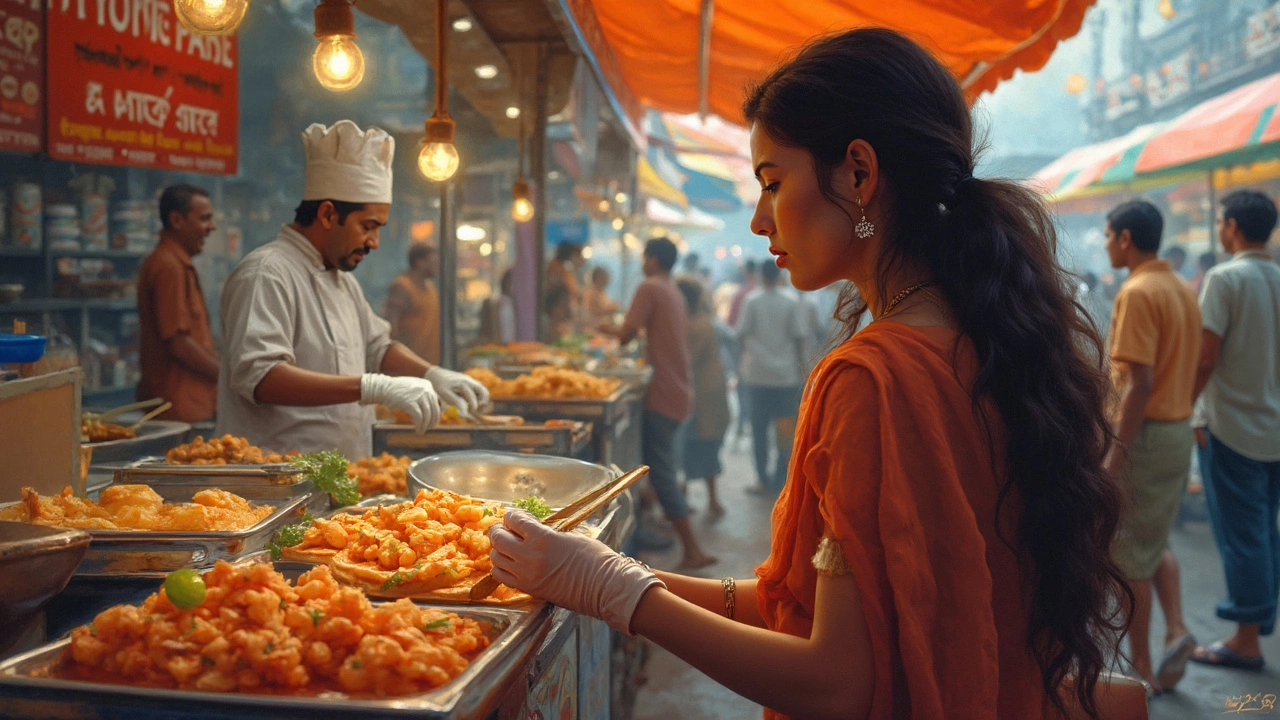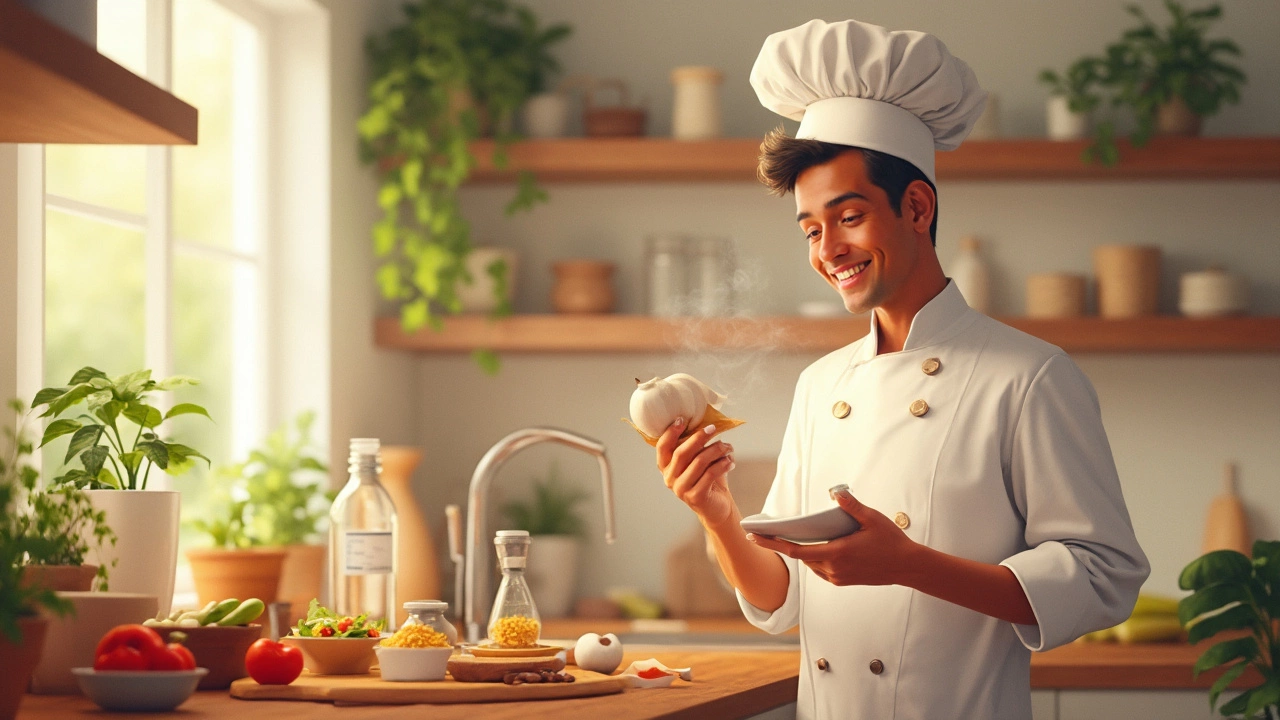How to Avoid Getting Ill in India: Simple Food Habits That Work
 May, 7 2025
May, 7 2025
Food in India is legendary, but it’s no secret that the wrong snack can send you straight to bed—or worse, the doctor’s office. The biggest culprits behind getting sick are things you can actually dodge: contaminated water, sketchy cooked foods, and raw stuff you should never touch outside your own kitchen. Here’s the trick—focus on simple swaps and habits to stay healthy without missing out on all the flavors.
First rule? Be super picky about your water. Don’t trust fancy packaging or even ice cubes unless you know the source. Bottled water with an unbroken seal is your friend, but so is the good old boiled tap water. Forget about drinking anything served in reused plastic cups at roadside joints—those can be loaded with germs you don’t want to meet.
Next up, don’t ignore cooked food. Freshly cooked and piping hot meals are way less likely to make you sick than stuff that’s been sitting out. Raw veggies and chutney look tempting, but aren’t worth the risk unless you wash and prep them yourself. If you’re trying Indian recipes at home, go for boiling, frying, or roasting—the heat kills most nasty bugs. Basically, play it safe with both what you eat and how you prepare it, and your stomach will thank you.
- Watch Your Water and Drinks
- Smart Picks for Food Safety
- Quick Home Hacks to Keep Food Clean
- Street Food: What’s Good and What’s Risky
- Recipes That Are Safe and Easy
Watch Your Water and Drinks
Staying healthy in India starts with what you pour into your glass. Never assume that tap water is safe, even if it looks clear. Local water systems can have bacteria, viruses, or tiny parasites. That’s why anyone—from locals to first-time travelers—should stick to bottled or boiled water.
If you buy bottled water, check that the seal isn’t broken. There are real cases of people refilling used bottles and selling them as new. If bottled seems sketchy or too pricey, boiling tap water works just as well. Bring it to a rolling boil for at least one minute. That kills off the bad stuff easily.
Skip drinks with ice from local stalls or restaurants if you aren’t 100% sure they’re using filtered water. It’s easy to forget that ice cubes are just frozen water, and they can hide a bunch of germs.
If you’re craving fresh juices from a street vendor, watch how they make it. Only choose stalls where fruits are washed well, the juice is squeezed in front of you, and clean glasses (or paper cups) are used. If it looks dusty or the fruit has flies on it, move on.
- India has different brands of bottled water: Bisleri, Aquafina, and Kinley are common and usually trustworthy.
- Consider using water purification tablets when you’re somewhere remote or unsure about bottled options.
- Coffee and chai that come steaming hot are generally safe because boiled water is used. It’s the lukewarm drinks or those in reused glasses you have to watch out for.
Want it super clear? Here’s a quick comparison of what’s safe and what’s not water-wise:
| Drink/Source | Safe? |
|---|---|
| Bottled water (sealed) | Yes |
| Boiled water | Yes |
| Tap water (unfiltered) | No |
| Ice from unknown source | No |
| Freshly made hot chai/coffee | Yes |
| Street juice (questionable prep) | No |
The small habits, like checking the seal or skipping the ice, are your first defense against getting sick from India's water. Prioritize these, and you’ll enjoy your drinks and feel just fine.
Smart Picks for Food Safety
If you want to avoid getting ill in India, you have to nail your food choices. Some foods are just safer than others, and a few small decisions can save you a ton of hassle. The big idea? Go for dishes with ingredients that are cooked through, handled less, and served fresh off the stove.
Here’s a reality check: lukewarm curries sitting in buffet trays, uncooked salads at random cafés, or those gorgeous but unhygienic fruit platters at train stations—these are all high-risk zones. Even in five-star hotels, avoid raw stuff unless you’re sure they’ve washed it right.
Safe bets for easy Indian recipes usually tick these boxes:
- Cooked at high heat—think dal, rajma, well-fried samosas, parathas, and tikkas.
- Avoids raw garnishes unless you prep them yourself. Lemon wedges can sometimes be rinsed in dodgy water at restaurants, so skip those extras.
- Freshly made and served hot. Anything reheated or kept out too long is risky—especially rice. Old rice is a known source of food poisoning bacteria called Bacillus cereus.
- No raw chutney or salads unless you made them and washed the veggies yourself.
- Minimal handling—simple curries and rotis are safer than mixed snacks with a million toppings.
Want a fact that might surprise you? The Indian Council of Medical Research found nearly 30% of street food samples in big cities like Delhi and Mumbai had harmful bacteria. Even at home or in clean restaurants, the way you store and heat food decides a lot.
| Food Type | Safe to Eat? | Reason |
|---|---|---|
| Steamed Idlis | Yes | High heat and simple handling |
| Street-side Chaat | No | Lots of raw items and toppings touched by many hands |
| Home-cooked Dal | Yes | Boiled thoroughly |
| Ready-cut Watermelon | No | Exposed to dust and unclean knives |
| Paratha from dhabha (served hot) | Yes | Cooked on a hot tawa and served straight away |
Bottom line: don’t just chase flavors—chase hygiene and heat. If it’s fresh, hot, and has minimal handling, it’s usually a good food safety pick in India.

Quick Home Hacks to Keep Food Clean
Worried about catching bugs from your own kitchen? You’re not alone—most cases of tummy trouble in India start at home, not on the street. But with a few fixes, you can dodge most of the risk. Here’s how you can keep everything squeaky clean and illness at bay.
- Wash your hands, a lot. Sounds basic, but it works. Scrub up before cooking and after handling raw eggs, meat, or even veggies fresh from the market.
- Use separate cutting boards. Never chop raw meat and veggies on the same board. Bacteria love to hop from one to the other.
- Rinse fruits and veggies well. Don’t just splash water. Use a brush on things like carrots and potatoes. Soak leafy greens in salt water or vinegar water for a few minutes.
- Keep your kitchen towels and sponges clean. These get nasty fast—swap them out every few days or toss them in the wash.
- Cover leftovers and store them quickly. Don’t leave cooked food sitting at room temperature. Pop it in the fridge within two hours, especially in hot weather.
- Boil your water for cooking. Even if it looks clear, boiling gets rid of most invisible nasties. This is extra important for rice, dal, or making tea.
Want a quick look at what kind of kitchen habits really help? Here’s a simple rundown:
| Hack | Why It Works |
|---|---|
| Boil water | Kills 99.9% of germs |
| Clean separate boards | Avoids cross-contamination |
| Quickly refrigerate | Stops bacteria growth |
Making these habits stick doesn’t take magic. Just keep your eyes open and don’t take shortcuts with cleanliness. If you’re serious about avoiding illness, start with your own kitchen, use these food safety tips, and you’ll skip most common problems in India.
Street Food: What’s Good and What’s Risky
Indian street food is crazy popular—think samosas, pani puri, pav bhaji, and chaat stalls on every corner. The flavors are out of this world, but catching the Delhi belly is a real risk if you aren’t smart about what (and where) you eat.
The golden rule? Hot and fresh is king. If they’re frying, grilling, or boiling your order on the spot, you’re much safer. Samosas and pakoras fresh out of the oil are less of a gamble. But stuff like cut fruit, chaat with yogurt, or anything that’s sitting out uncovered invites trouble.
Watch for simple red flags at stalls—dirty hands, already-prepared food just lying around, or a busy spot that still looks unhygienic. If a place has a big crowd, odds are the food turns over quickly and is freshly made. That’s a good sign.
- Only buy street food from bustling, popular vendors.
- Avoid anything with raw chutneys, garnishes, or ice.
- If the vendor handles money and food with the same hand—skip it.
- Carry your own tissues and hand sanitizer. You’ll need them.
"Always choose food that’s cooked to order and served hot. Avoid peeled fruits, salads, and dairy-based items from street carts."
- Dr. Aparna Joshi, Apollo Hospitals, Mumbai
Data from the Indian Food Safety and Standards Authority shows that more than 70% of foodborne illnesses in busy cities come from street and roadside stalls. But you don’t have to totally give up on Indian street food. Just trust your eyes, nose, and instincts. When in doubt, walk away—there’s always another stall right around the corner, probably selling something even better.
| Street Food | Safe When | Risky When |
|---|---|---|
| Samosa/Pakora | Hot & fresh | Cold or reheated |
| Paani Puri | Made & served with bottled water | Served with tap water |
| Dahi Chaat | Served cold but from a clean vendor | Sitting out too long |
| Cut Fruit | Washed/peeled by you | Sold pre-cut on the street |
Stick to this game plan, and you’ll taste the best of India without sending your stomach into full meltdown mode.

Recipes That Are Safe and Easy
If you’re looking for easy Indian recipes that won’t leave you regretting your food choices, stick to dishes that are cooked through and use boiled water. These meals are pretty much foolproof and give you loads of flavor with practically zero risk.
Let’s start with khichdi. It’s basically Indian comfort food—rice and lentils cooked until soft, with turmeric, cumin, and just enough veggies to keep things interesting. Everything is boiled, which makes it safe and gentle on your stomach. Plus, turmeric and ginger in khichdi help fight bacteria naturally. A bowl of piping hot khichdi is your gut’s best friend, especially if you’re new in town and still adjusting.
Soupy dishes are also smart options. Think dal (lentil soup) or rasam (a tangy South Indian broth). They bubble away on the stove, killing anything sketchy. Just watch out for garnishes—skip raw onions or cilantro at sketchy eateries and add those at home after a thorough rinse.
Parathas and rotis—flatbreads cooked on a hot griddle—are hard to mess up since the heat covers both sides. Pair with cooked veggies instead of salads to avoid raw surprises. If you’re making these at home, a nonstick tawa or cast iron pan gets the job done quickly and safely.
Plain masala chai is also a good bet. Boil the water, toss in real tea leaves and spices, add milk, and cook until frothy. The boiling takes care of any germs in both the water and milk. Skip street-side chai served in reused cups; make yours at home or go to spots with single-use glasses.
- Khichdi (rice and lentil mash)
- Dal Tadka (spiced lentil soup)
- Rasam (tangy tomato broth)
- Vegetable Pulao (spiced rice with cooked veggies)
- Plain Paratha (griddled flatbread)
- Masala Chai (spiced milk tea)
If you want numbers, a study by the Indian Council of Medical Research found that over 60% of foodborne illnesses in India come from roadside or improperly cooked food, not from home-cooked, boiled meals. That makes a pretty strong case for sticking to home-cooked options, especially where water and hygiene are sketchy.
Bottom line—choose recipes with heat, skip anything that isn’t cooked, and don’t be shy about boiling water. Play safe, and you’ll enjoy all that Indian food has to offer without an upset stomach holding you back.
